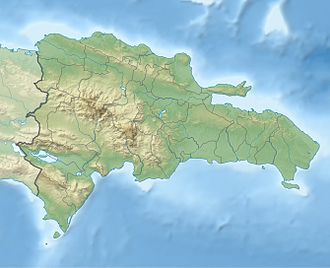| La Gran Sabana National Park | |
|---|---|
| Location | Dominican Republic |
| Coordinates | 18°24′N71°23′W / 18.400°N 71.383°W |
| Area | 219.58 km2 (84.78 sq mi) |
| Designation | National Park |
| Designated | 2009 |
La Gran Sabana National Park is a protected area in the Dominican Republic. It lies east of Lake Enriquillo in the Hoya de Enriquillo lowland. It was established in 2009, and has an area of 219.58 km2. [1]
